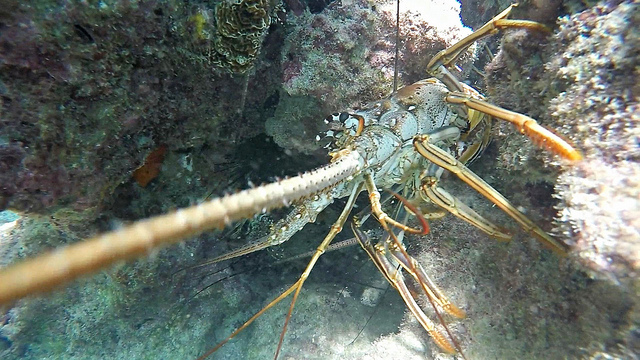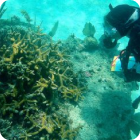
By: Nicole Forsgren
It’s National Lobster Day so we wanted to share some facts about this fascinating species found in Florida’s waters. The Florida spiny lobster earned its name from spines that cover its bodies, aiding in protection against predators. One of their defining features are the two large spots located on the top of the second segment of their tail. In addition, long antennae-like structures known as “antennules” can be found on top of their eyes. These features are used to sense movement, as well as the presence of chemicals in the surrounding water.
Spiny lobsters most commonly reproduce in the summer and spring. Following fertilization, the female will carry the eggs (that are bright orange in color) on the underside of her tail. This allows for protection from predators and the inability to be noticed from those swimming overhead. After the eggs have hatched, the larvae will travel long distances through currents, eventually settling in shallow habitats.
In Florida, the spiny lobster fishery is the largest commercial fishery. Throughout their range, populations are declining. The meat of this invertebrate makes it highly desirable, opening the possibility of extinction vulnerability. Declining spiny lobster populations influence coastal economies, recreational fishing, and the food web as a whole. Responsible lobster harvesting is crucial to the survival of the species. Small changes in your annual fishing trips can help make the difference in healthy spiny lobster populations.











